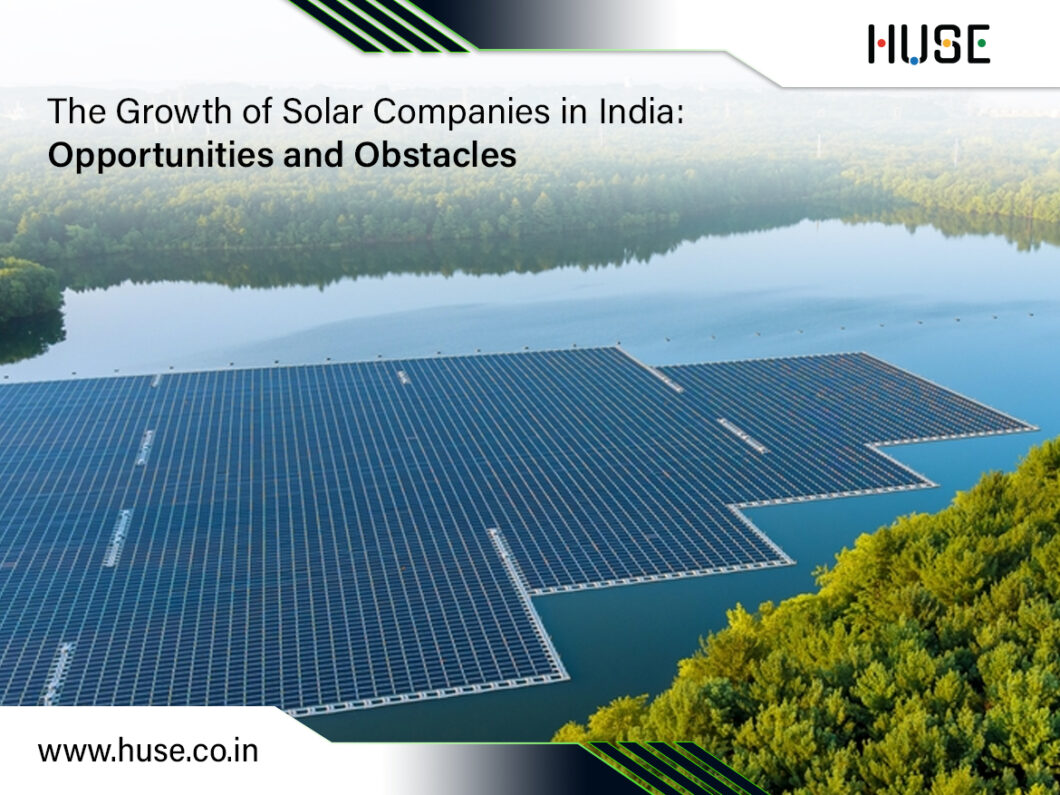India, with its approximately 300 sunny days annually and growing energy demands, has become a hub for solar energy innovation. The rise of solar companies in India has marked a significant step towards sustainable energy solutions, helping to reduce dependency on fossil fuels and imports.
However, with every opportunity comes its own set of challenges. Despite its promising growth, the solar energy sector faces unique obstacles that shape its future trajectory.
In this blog, we will explore the growth of solar companies in India, examining the opportunities driving this progress and the hurdles that still need to be overcome.
The Rise of Solar Energy in India
India is one of the largest consumers of energy in the world, and as the demand for power grows, the need for sustainable energy solutions becomes even more critical. Solar energy is particularly attractive due to India’s geographical advantage, receiving abundant sunshine throughout the year.
The government has set ambitious targets to generate 500 GW of non-fossil fuel-based power by 2030, with a significant portion expected to come from solar power.
Solar power solutions companies have capitalized on these favorable conditions, with the solar market expanding rapidly over the past decade. As of 2024, India has become one of the top producers of solar energy globally.
Opportunities for Solar Companies in India
The growth of the solar sector has unlocked numerous opportunities:
1) Favorable Policies
The Indian government supports the solar industry through initiatives like the National Solar Mission and incentives for renewable energy adoption. These policies have encouraged solar companies to invest in cutting-edge technologies like floating solar power plants.
2) Market Expansion
With increasing urbanization and industrial growth, the demand for renewable energy continues to rise. Solar companies in India are tapping into residential, commercial, and industrial markets to offer tailored solar power solutions.
3) Innovative Technologies
Floating solar plant installations are gaining popularity due to limited land availability. Solar companies are leveraging this technology to utilize water bodies, improve efficiency, and minimize ecological impact.
4) Export Potential
India’s growing expertise in solar technology has positioned it as a key player in exporting solar equipment and solutions to other countries. This contributes not only to revenue but also to global energy sustainability efforts.
The Role of Floating Solar Power Plants
Floating solar systems are a game-changer for the industry. By utilizing underutilized water bodies, these systems save valuable land and enhance energy efficiency. The cooling effect of water on solar panels increases power generation, making floating solar technology an attractive option for sustainable development.
India has witnessed a growing adoption of floating solar power plants, with key players driving innovation in this space. Floating solar companies in India are making significant contributions toward meeting the country’s renewable energy targets.
Challenges Faced by Solar Companies in India
The solar industry in India, though progressing, still faces a number of challenges:
1. Land and Space Constraints
India’s high population density creates competition for land, which poses challenges for large-scale solar installations. Floating solar partially addresses this issue by utilizing water bodies, but these projects require specialized infrastructure and technology.
2. Storage and Grid Infrastructure
Efficient energy storage remains a bottleneck for solar companies in India. Without reliable battery systems, solar energy cannot meet round-the-clock energy demands. Moreover, outdated grid infrastructure struggles to integrate renewable energy seamlessly.
3. Environmental and Technical Concerns
Solar companies in India face specific challenges, such as the maintenance of floating solar panels and their long-term impact on aquatic ecosystems. Technical issues like anchoring and ensuring panel durability under fluctuating water levels add to the complexity.
- High Initial Investment
The high capital expenditure required to set up solar power infrastructure remains a significant barrier. Although the costs of solar panels have decreased, the overall investment needed to build large-scale solar plants, particularly floating solar power plants, remains high. Financing options for such large projects are not always readily available, especially for smaller developers.
HUSE: Leading the Way in Solar Power Solutions
We are committed to providing advanced solar power solutions to meet the growing energy demands of India. With a focus on sustainability, we offer innovative solar technologies, including floating solar power plants, that help harness the power of the sun efficiently and economically.
Our mission is to provide clean, sustainable, and affordable solar energy solutions that help individuals and businesses reduce their carbon footprint while saving on energy costs.
The Road Ahead
The future of solar companies in India looks promising. As the nation continues its journey towards renewable energy leadership, innovations like floating solar power plants and advancements in solar power solutions will drive progress.
By addressing challenges and harnessing opportunities, solar companies in India are poised to lead the world in renewable energy adoption, fostering a cleaner, greener future for generations to come.
For more information about how HUSE is transforming India’s solar landscape, visit our website


